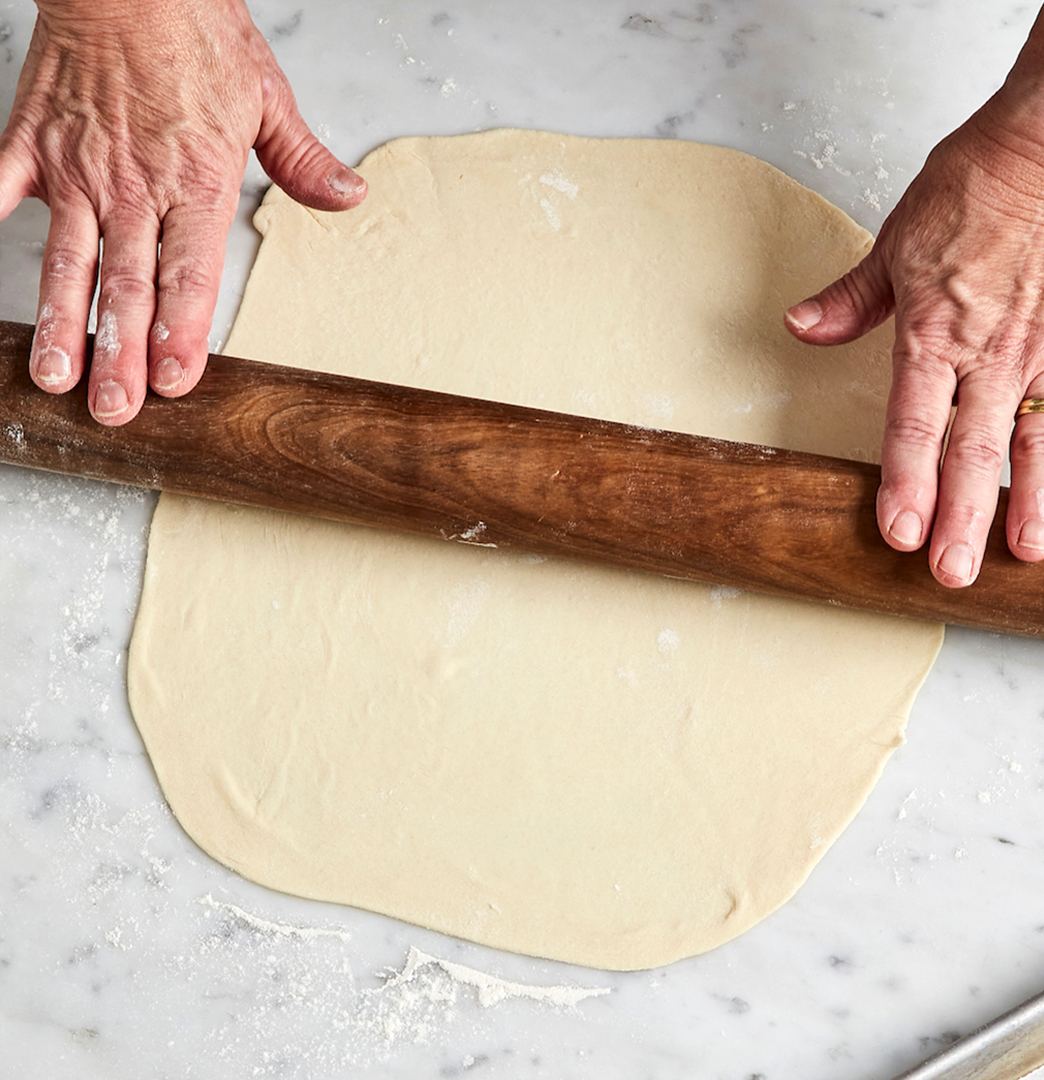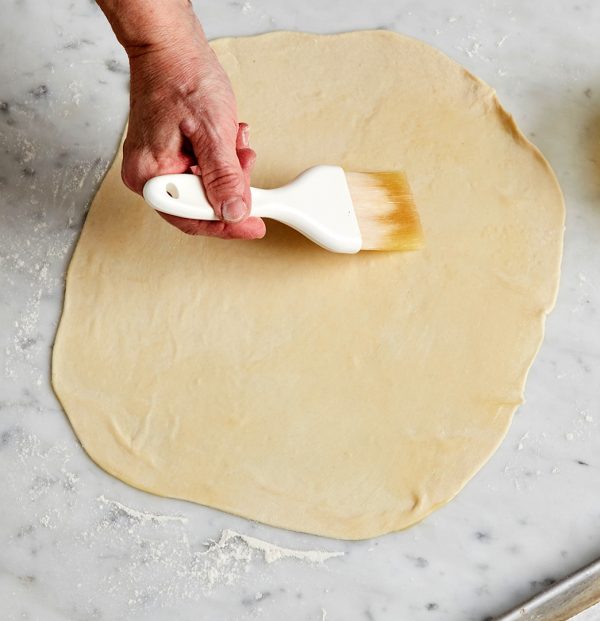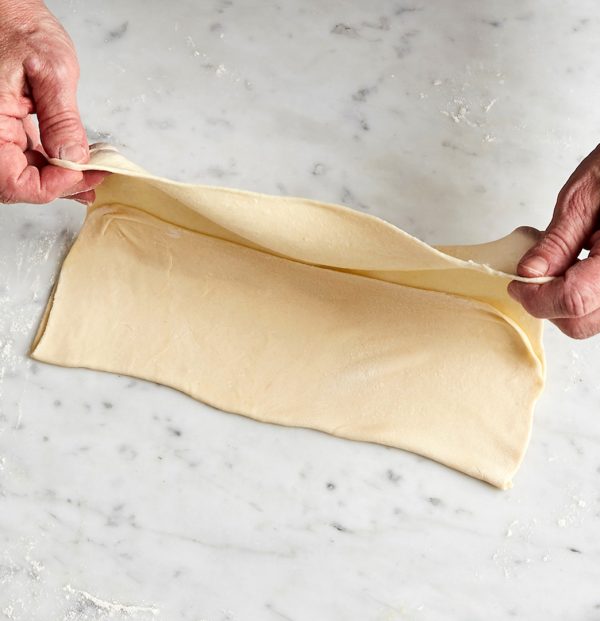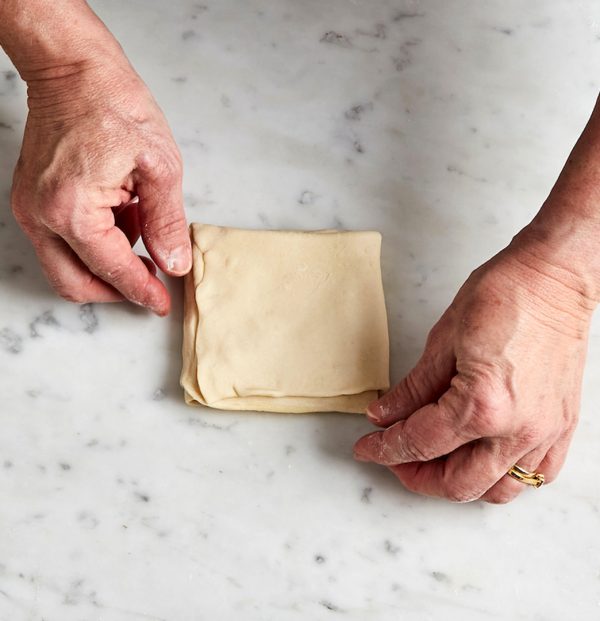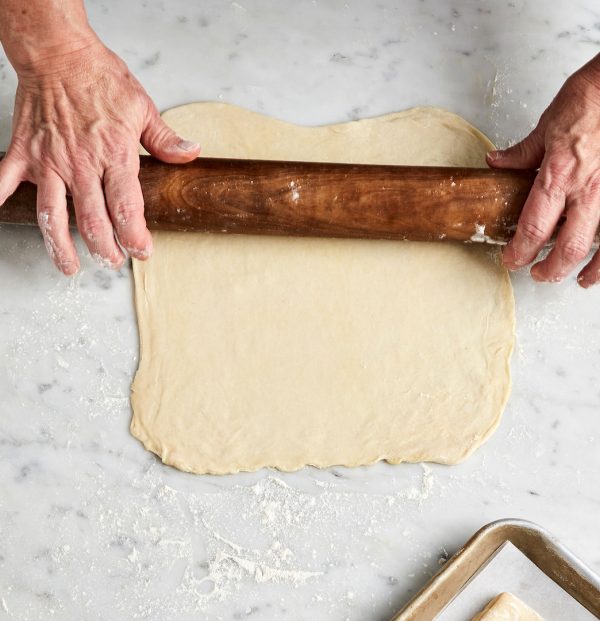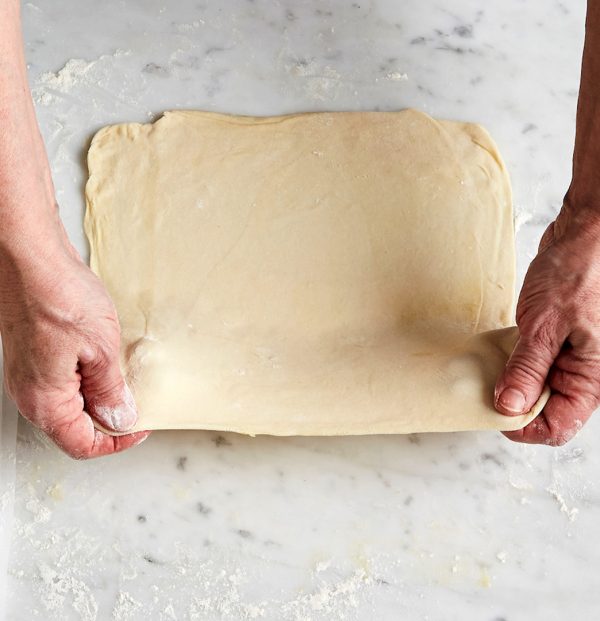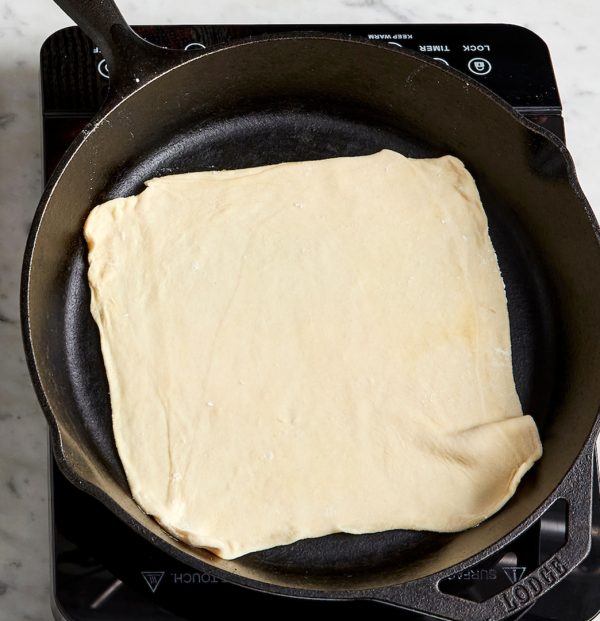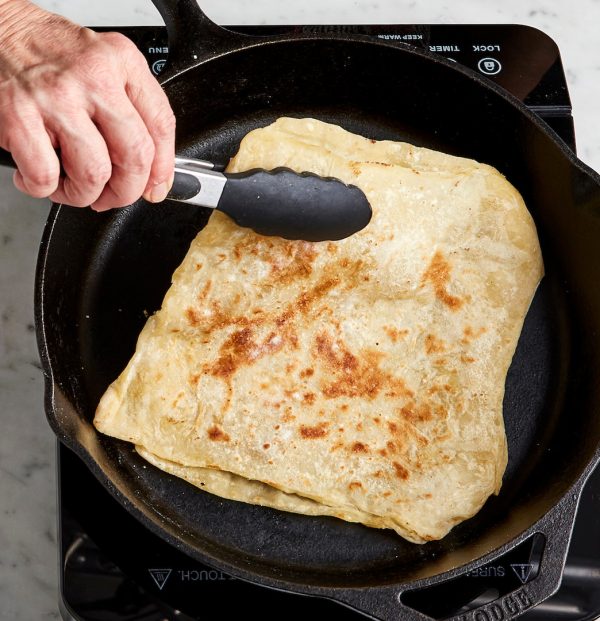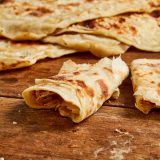There were cats, water pistols, assorted toys, throw pillows and good friendship on display in the house in Anatolia where I went to get a cooking lesson on making flatbread, as well as tirit (bread soaked in stock and topped with shredded chicken or meat), patates paçasi (mashed potatoes with yogurt and topped with cheese) and an easy homemade version of halva.
My hosts—Zeynep Savci Yaslica and Turgut Yaslica, and Yuksel Kasitoglu and Ayse Kasitoglu—were two couples who do everything together, from camping to swimming the Golden Horn. I felt like I was on the set of “I Love Lucy”—close friends and good repartee.
After two rounds of coffee, we moved downstairs to the kitchen, where Ayse started making katmer, a buttery layered flatbread.
This simple bread—with a dough of just flour, salt and water, no leavener—comes from her hometown, Kastamonu, in the north of Turkey. The bread also can be filled with cheese, egg and parsley, or tahini and sugar (the latter version is called tahinli katmer).
There are two styles. For the first, the dough is rolled out with a thin rolling pin until a foot or so in diameter, cooked in a skillet, then rolled up and cut crosswise into small pieces. Many Turks refer to this as “rice,” since it used like rice in many recipes—soaked in stock and topped with meat. (When I asked why the dough was rolled into a circle, not a rectangle, Ayse said simply, “Because my pan is round!”)
Even more interesting is the version that transforms this homemade dough into a multi-layered flatbread that resembles lavash. Once the dough is rolled out, Ayse oils it, then folds one side over the other, unfolding it back to the original circle. She does this with all four sides. The dough is rolled up and shaped like a curled snake back into a small circle. This then is rolled out a second time. After that, the dough is cooked in a skillet, where it puffs into layers.
For our version, we used a combination of oil and melted butter and a simpler folding method. We also found that resting the dough between steps was necessary to avoid the thin dough snapping back when rolled out. Another version replaces the oil-butter mixture with tahini, sugar, melted butter, ground coriander and cinnamon.
Once again, I learned the lesson of threes: flour, salt and water can be transformed into thousands of recipes. All you need is a good friend in the kitchen.
Buttery, Flaky Turkish Flatbread
